Christina Kruse’s miniature psychological playground
In her show, ‘Plasterheads’ Christina Kruse invites us into an intimate world where architecture and geometry meet the depths of the human psyche

Over the last decade, artist Christina Kruse has honed a distinct visual language in which abstracted human figures collide with bold rectilinear forms.
For her latest exhibition, ‘Plasterheads’ at Helwaser Gallery, New York, Kruse’s new work is part installation, part ‘playground of the inner psyches’. Lunapark is a miniature world, where figure-like maquettes pose on, climb across and play around with architectural elements. Despite all this activity, the figures seem to barely acknowledge each other's existence.

Christina Kruse, Lunapark, 2021 (detail)
For Kruse, the structure of the installation, and its materials, are the world; the maquettes symbolise different psychological states and the endless permutations of human behaviour. The materials too are metaphors; plaster and soapstone are easily shaped, emphasising the malleability of the human condition.
German-born, New York-based Kruse’s work spans photography, painting, and sculpture. Her earlier photographic and collage works draw on her personal biography, often deploying self-portraits layered with tape, watercolour, ink, and other media.
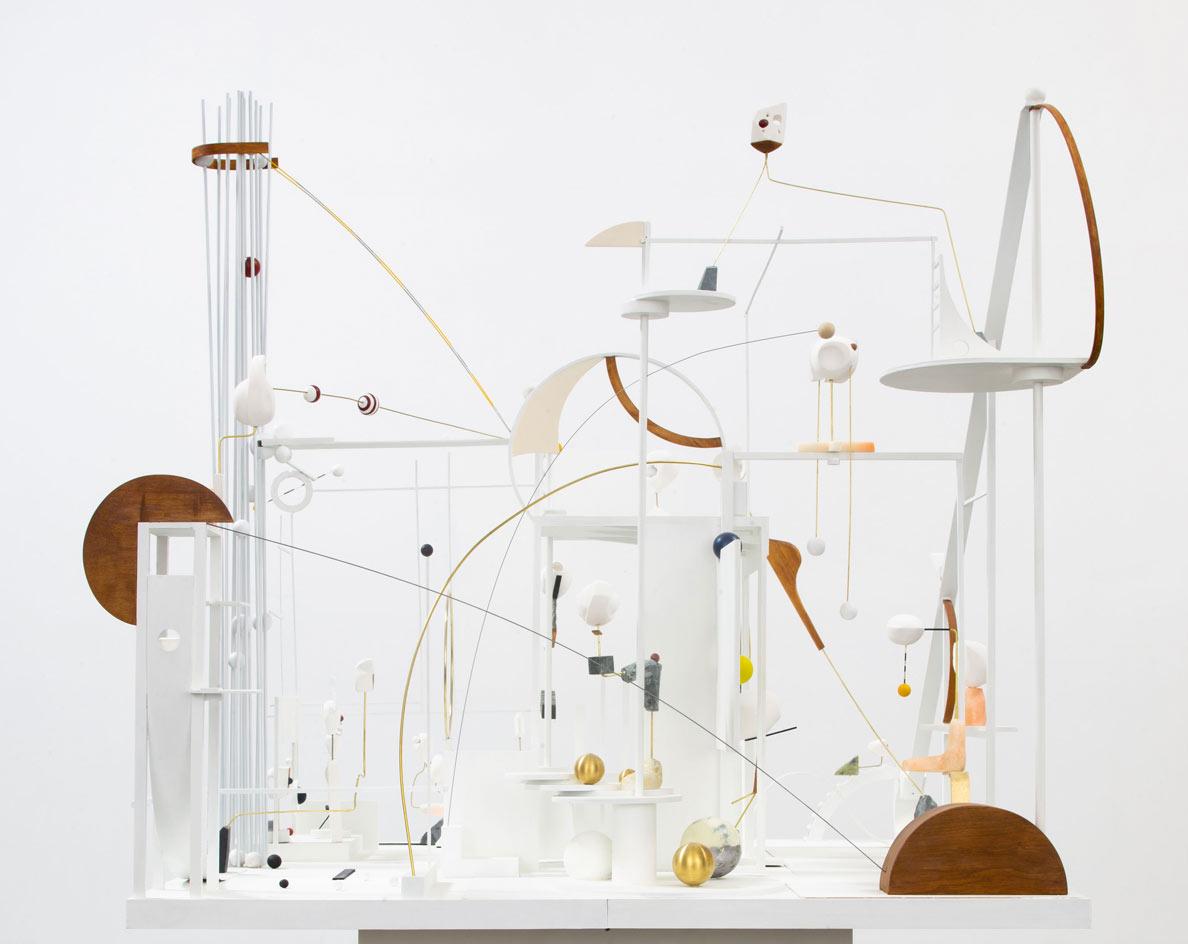
Christina Kruse, Lunapark, 2021
Her ongoing sculptural pieces combine bronze, marble and wood in static, geometric compositions. Although grounded in structure and equilibrium, Kruse’s sculptures draw parallels with human heads and faces. In her work, the rationality and more capricious facets of human life coexist.
When the pandemic struck, Kruse fled New York to shelter with her family in rural Germany. Far removed from her studio resources, she began to make with what was at hand. The resulting plaster works, created in a makeshift studio, became studies for her new installation, one born out of displacement, necessity, and a return to bygone tools and techniques.
Elsewhere, a second installation comprises four sculptures. Will o’ the wisp (2021) evokes the imagery of a still landscape made in wood, marble, plaster, and soapstone. Juxtaposed with the delicate, elongated forms found in Lunapark, these sculptures exude solidity, stability and balance through sheer volume and weight. If Lunapark is controlled chaos, Will o’ the wisp brings a new order.
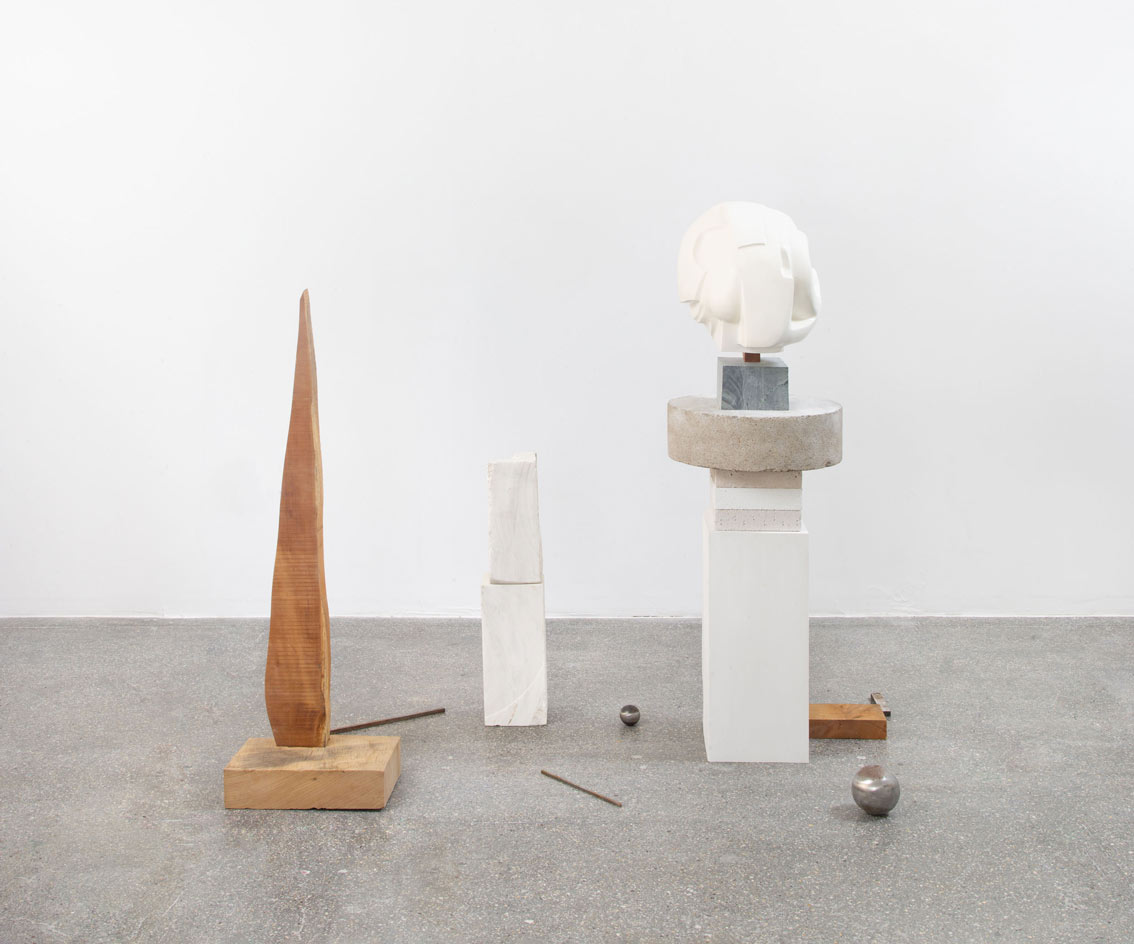
Christina Kruse, Wil o' the wisp, part of 'Plasterheads' at Helwaser Gallery, New York.

Christina Kruse, Lunapark, 2021
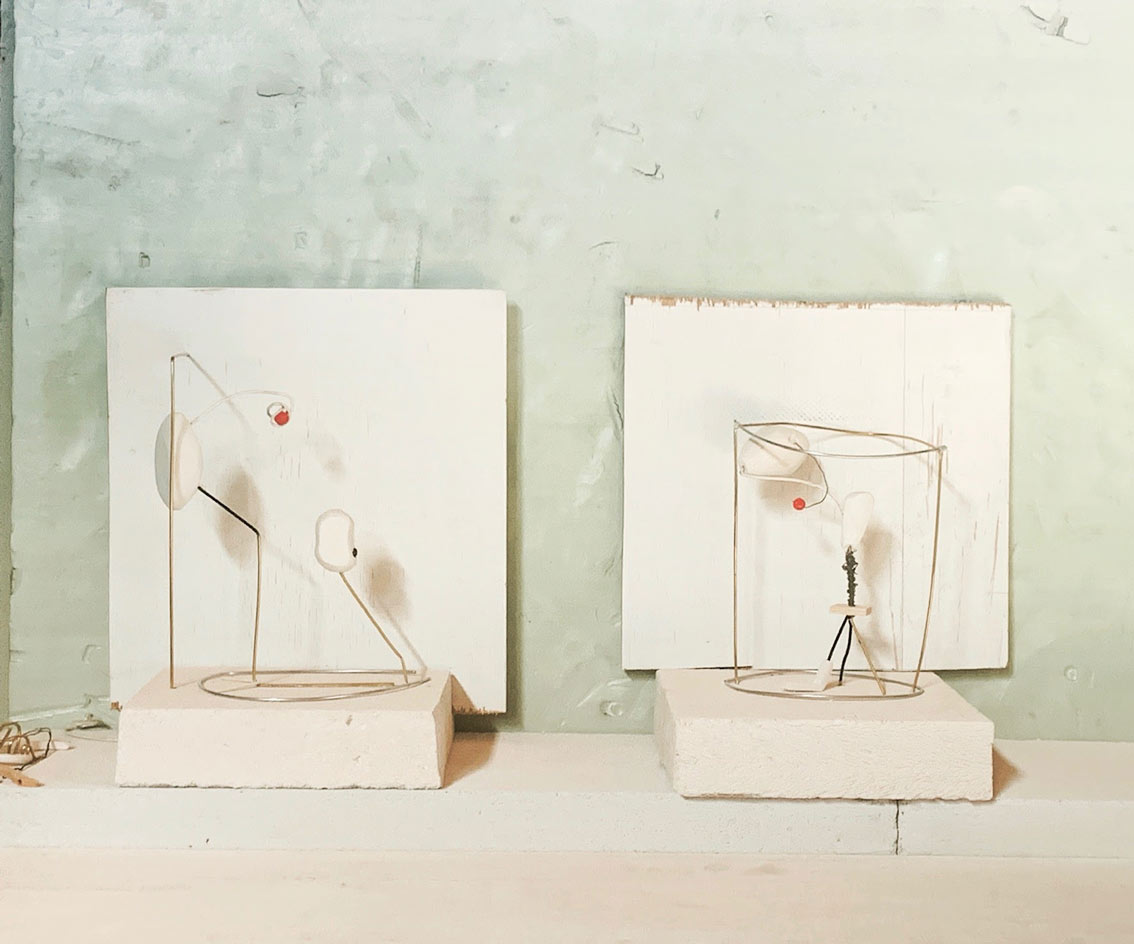
Works in progress for 'Plasterheads' at Christina Kruse's studio in Germany.
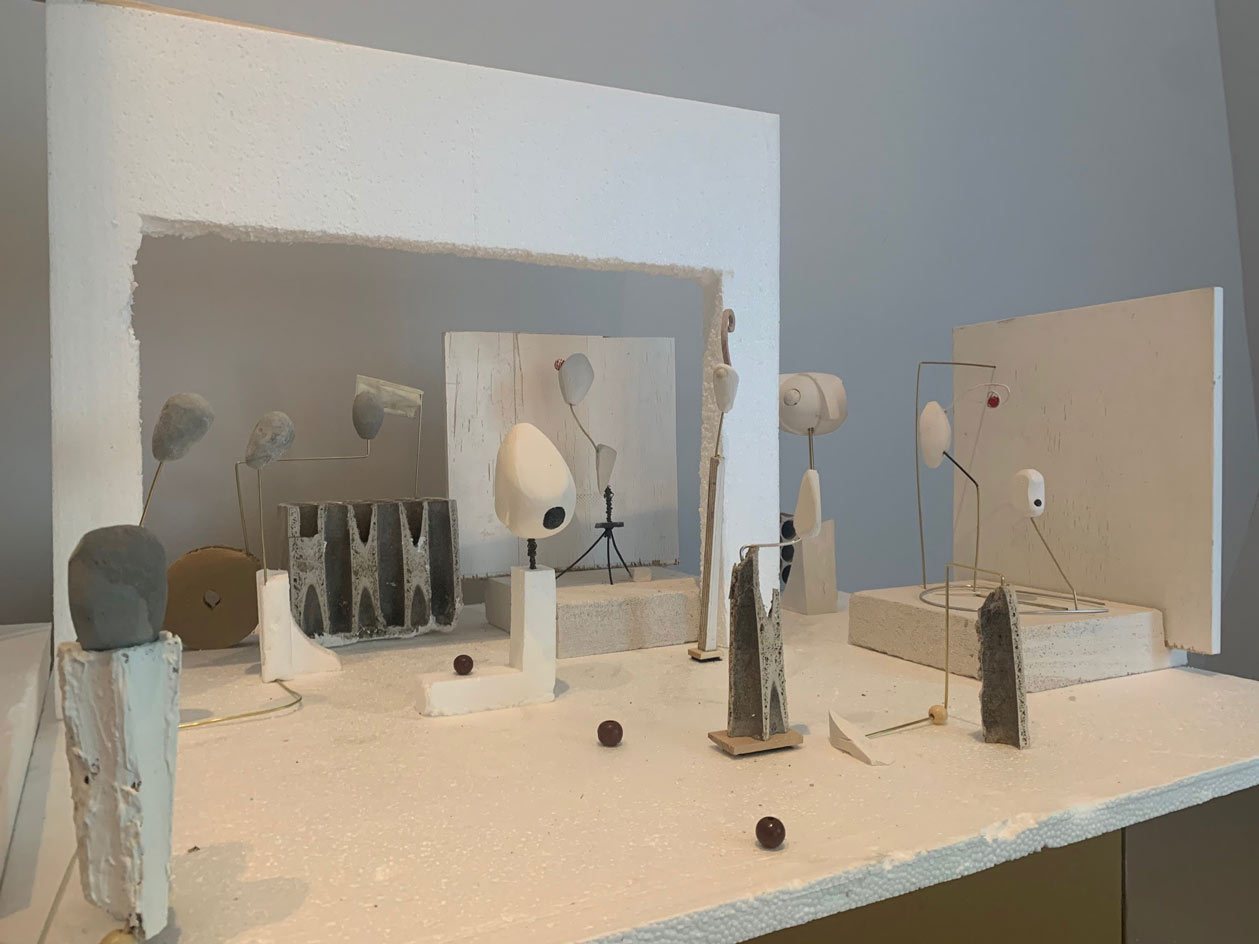
Works in progress at Christina Kruse's studio in Germany.

Christina Kruse, Lunapark, 2021 (detail)

Christina Kruse, Lunapark, 2021
INFROMATION
Christina Kruse, ‘Plasterheads’, until 28 August 2021, Helwaser Gallery, New York, helwasergallery.com
ADDRESS
833 Madison Ave #3F
New York, NY 10021
Receive our daily digest of inspiration, escapism and design stories from around the world direct to your inbox.
Harriet Lloyd-Smith was the Arts Editor of Wallpaper*, responsible for the art pages across digital and print, including profiles, exhibition reviews, and contemporary art collaborations. She started at Wallpaper* in 2017 and has written for leading contemporary art publications, auction houses and arts charities, and lectured on review writing and art journalism. When she’s not writing about art, she’s making her own.
-
 How We Host: Interior designer Heide Hendricks shows us how to throw the ultimate farmhouse fête
How We Host: Interior designer Heide Hendricks shows us how to throw the ultimate farmhouse fêteThe designer, one half of the American design firm Hendricks Churchill, delves into the art of entertaining – from pasta to playlists
-
 Arbour House is a north London home that lies low but punches high
Arbour House is a north London home that lies low but punches highArbour House by Andrei Saltykov is a low-lying Crouch End home with a striking roof structure that sets it apart
-
 25 of the best beauty launches of 2025, from transformative skincare to offbeat scents
25 of the best beauty launches of 2025, from transformative skincare to offbeat scentsWallpaper* beauty editor Mary Cleary selects her beauty highlights of the year, spanning skincare, fragrance, hair and body care, make-up and wellness
-
 Nadia Lee Cohen distils a distant American memory into an unflinching new photo book
Nadia Lee Cohen distils a distant American memory into an unflinching new photo book‘Holy Ohio’ documents the British photographer and filmmaker’s personal journey as she reconnects with distant family and her earliest American memories
-
 Out of office: The Wallpaper* editors’ picks of the week
Out of office: The Wallpaper* editors’ picks of the weekIt’s been a week of escapism: daydreams of Ghana sparked by lively local projects, glimpses of Tokyo on nostalgic film rolls, and a charming foray into the heart of Christmas as the festive season kicks off in earnest
-
 Ed Ruscha’s foray into chocolate is sweet, smart and very American
Ed Ruscha’s foray into chocolate is sweet, smart and very AmericanArt and chocolate combine deliciously in ‘Made in California’, a project from the artist with andSons Chocolatiers
-
 Inside the work of photographer Seydou Keïta, who captured portraits across West Africa
Inside the work of photographer Seydou Keïta, who captured portraits across West Africa‘Seydou Keïta: A Tactile Lens’, an exhibition at the Brooklyn Museum, New York, celebrates the 20th-century photographer
-
 Out of office: The Wallpaper* editors’ picks of the week
Out of office: The Wallpaper* editors’ picks of the weekFrom sumo wrestling to Singaporean fare, medieval manuscripts to magnetic exhibitions, the Wallpaper* team have traversed the length and breadth of culture in the capital this week
-
 María Berrío creates fantastical worlds from Japanese-paper collages in New York
María Berrío creates fantastical worlds from Japanese-paper collages in New YorkNew York-based Colombian artist María Berrío explores a love of folklore and myth in delicate and colourful works on paper
-
 Out of office: the Wallpaper* editors’ picks of the week
Out of office: the Wallpaper* editors’ picks of the weekAs we approach Frieze, our editors have been trawling the capital's galleries. Elsewhere: a 'Wineglass' marathon, a must-see film, and a visit to a science museum
-
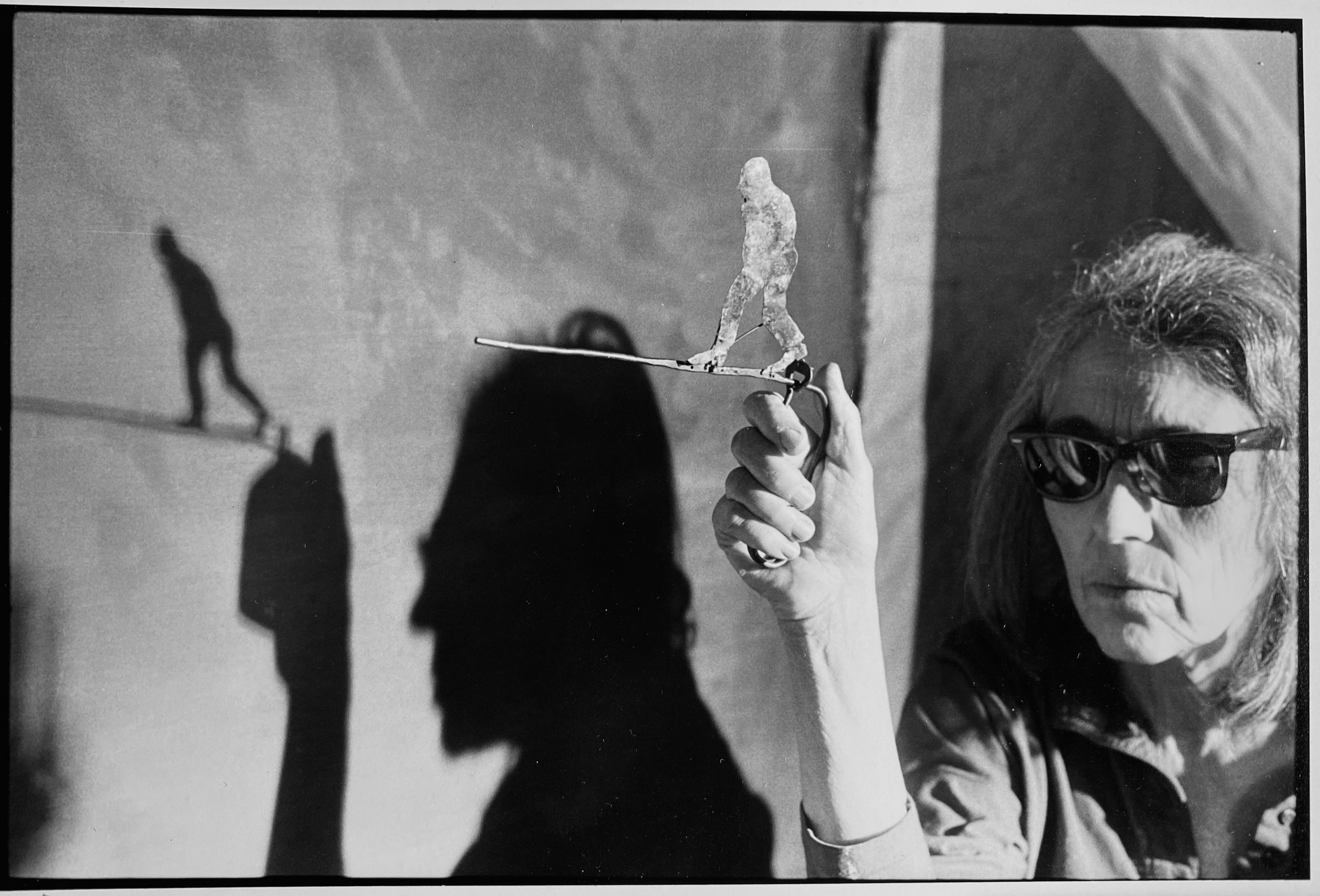 June Leaf’s New York survey captures a life in motion
June Leaf’s New York survey captures a life in motionJune Leaf made art in many forms for over seven decades, with an unstoppable energy and fierce appetite leading her to rationalise life in her own terms.